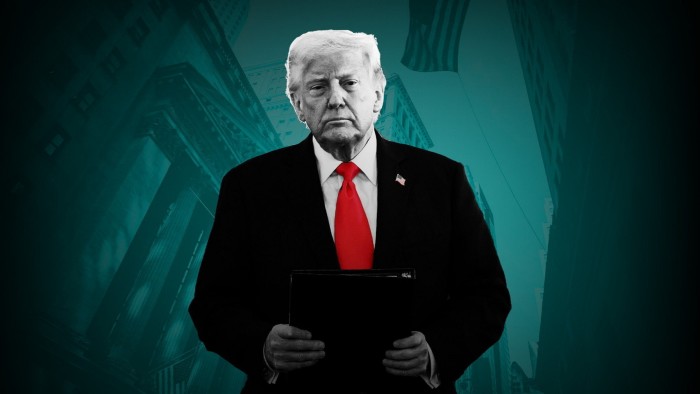Access the White House Watch newsletter at no cost
Your source for understanding the implications of Trump’s second term on Washington, business, and the global landscape
U.S. stock markets have plummeted over 7 percent in the tumultuous initial 100 days of Donald Trump’s second term—the worst start for a new administration since Gerald Ford took office fifty years ago.
The S&P 500 index has dropped 7.2 percent since the inauguration day, primarily due to Trump’s aggressive trade policies creating significant market fluctuations that have shaken investor confidence in the U.S. economy and raised worries about inflation caused by tariffs in the largest economy worldwide. On Tuesday, it ended the day 0.6 percent higher.
The last instance where the S&P 500 faced a steeper decline during a president’s early days in office was in the latter part of 1974 when Ford assumed the presidency following Richard Nixon’s resignation, based on Financial Times calculations using FactSet data.
At that time, U.S. stocks were caught in an extended downturn fueled by a recession and soaring oil prices.
Now, five decades later, Trump’s efforts to disrupt the global trading system through imposing significant “reciprocal” tariffs on numerous countries have plunged U.S. financial markets back into chaos, according to both strategists and investors.
“We’re picking fights with every player in the playground simultaneously,” stated David Kelly, chief global strategist at JPMorgan Asset Management. “The markets indicate there are doubts about whether the U.S. will succeed against the entire rest of the globe.”

George Pearkes, a macro strategist at Bespoke Investment Group, noted that investors are feeling overwhelmed by the constant flow of trade-related updates from the White House recently.
Following Trump’s sweeping tariff declarations on April 2, stock prices dropped but regained many losses when most tariffs were postponed for 90 days.
“To me, it feels like Wile E. Coyote, legs spinning in the air, trying to gauge how far we’ve fallen off a cliff,” Pearkes added.
This year’s market downturn has surprised many Wall Street investors who anticipated a thriving market under a pro-business Republican administration featuring tax reductions and deregulation. Recently, over 10 of the largest U.S. banks have lowered their end-of-year S&P 500 price forecasts amidst capital fleeing dollar-based assets.
Lisa Shalett, chief investment officer at Morgan Stanley Wealth Management, remarked that investors “have every reason to feel fatigued.”
She emphasized that Trump’s “liberation day” tariff onslaught “sparked market unrest,” with inconsistent tariff policies generating maximum uncertainty, intermittently contrasted by administration comments aimed at reassurance and reducing tensions.
Foreign investors, who owned a record 18 percent of U.S. equities at the beginning of the year, have sold around $60 billion in stocks since early March, as per Goldman Sachs. Much of the selling has been driven by European funds.
Both the dollar and U.S. Treasuries have also faced pressure from investors reacting to Trump’s unpredictable tariff policies.
In the stock markets, recently high-performing U.S. tech stocks have been the hardest hit, facing challenges from Trump’s tariffs and new developments from a Chinese AI start-up, DeepSeek, which caught investors off guard by claiming to have created a large language model at a fraction of the cost compared to its U.S. competitors.
In December, companies like Tesla, Alphabet, Nvidia, and Meta—referred to as the Magnificent Seven—were some of the most favored high-value stocks, as highlighted by Citigroup’s analysis.
However, these stocks have since turned into “crowded shorts,” with investors pulling back and some actively betting against them, according to a recent note from Citi. “Anyone who was fully invested in the [Magnificent Seven] has faced significant losses,” stated JPMorgan’s Kelly.
Trump has frequently downplayed concerns regarding the negative market responses to some of his tariff decisions and may evaluate his initial 100 days based on whether he fulfilled his promises, rather than the actual outcomes being positive or negative, as mentioned by Thierry Wizman, global foreign exchange and rates strategist at Macquarie.



